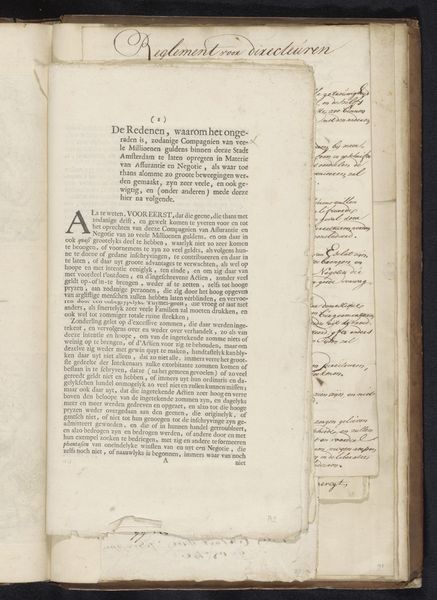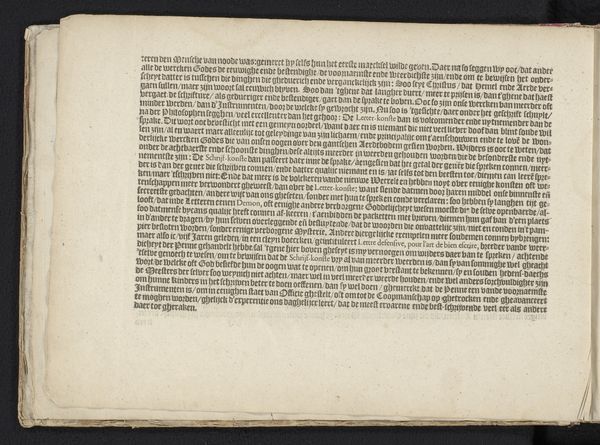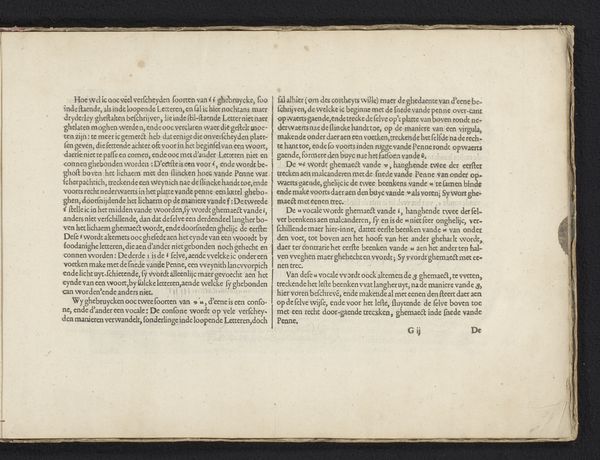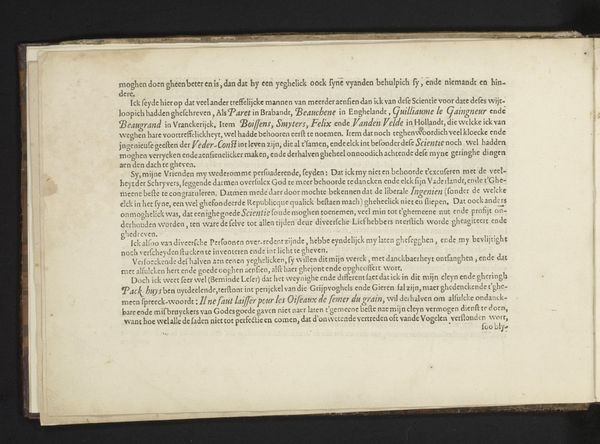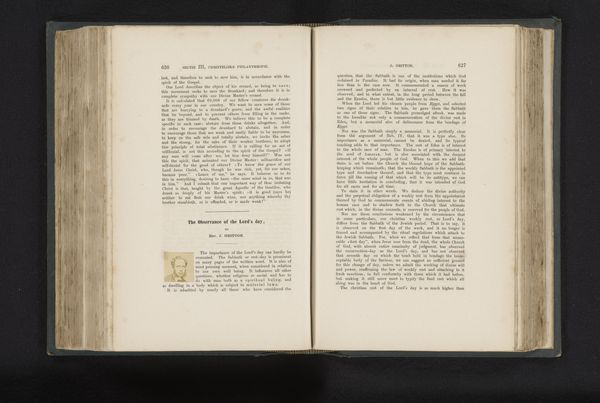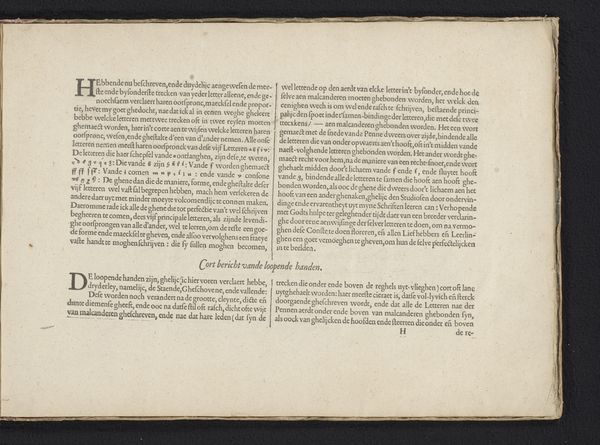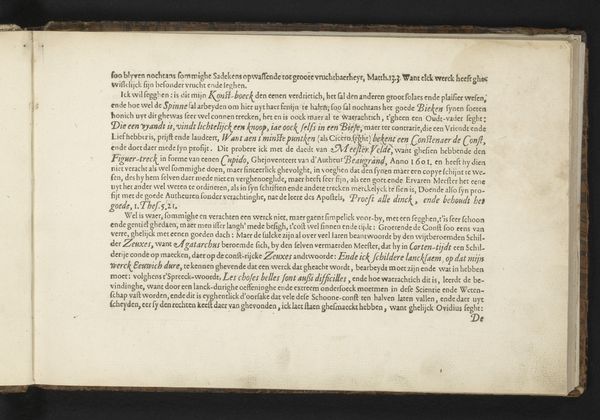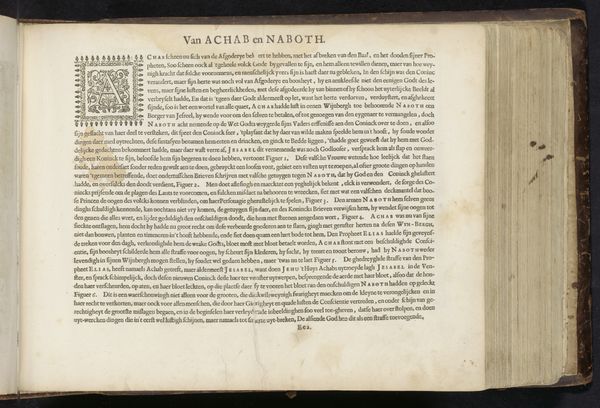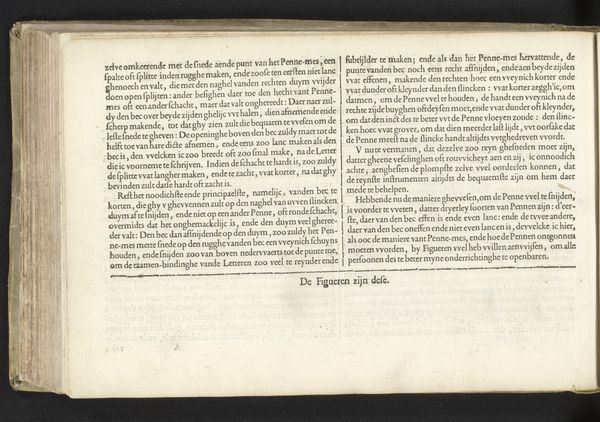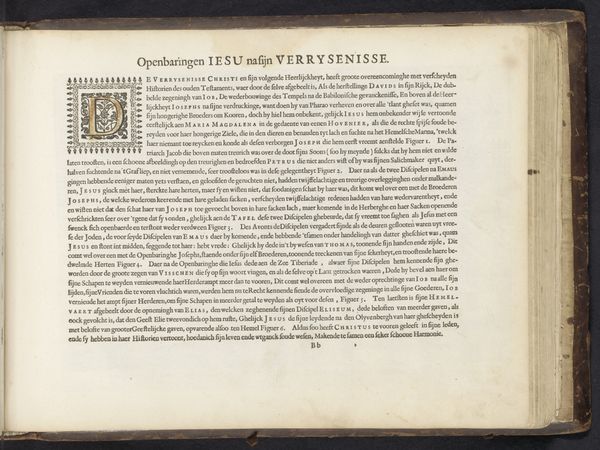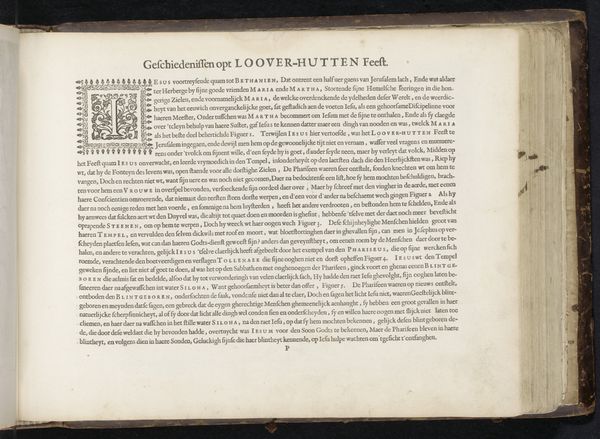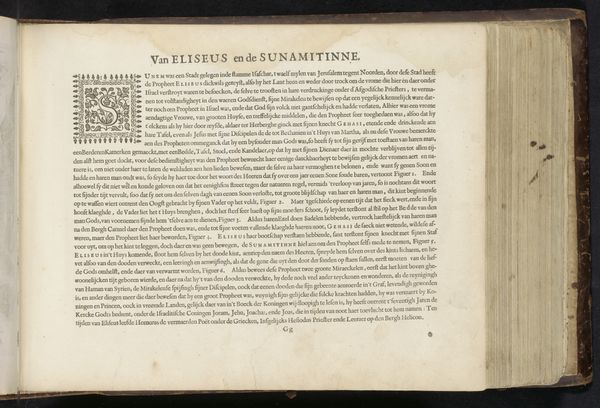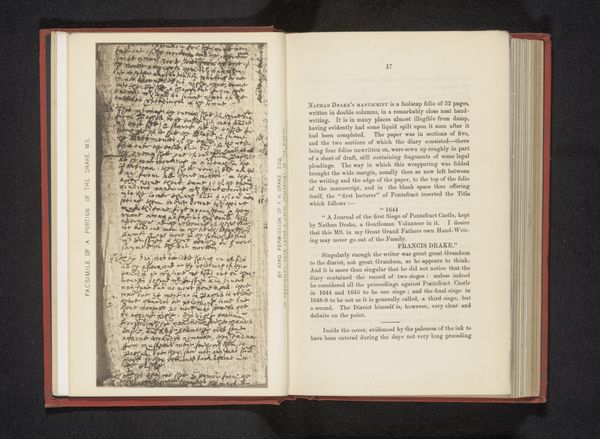
print, paper
# print
#
paper
Dimensions: height 19.1 cm, width 13.2 cm, depth 5.3 cm
Copyright: Rijks Museum: Open Domain
Jean Taffin's "Traicte de l'amendement de vie," made circa the late 16th century, presents a diptych-like composition, where two open book pages sit side by side. The initial visual impact stems from the stark contrast between the off-white, textured paper and the densely packed, dark letterpress text. This interplay of light and shadow creates a visual rhythm, drawing the eye across the columns of words. The structure of the text itself—organized into numbered sections and distinct paragraphs—reveals an effort to impose order and reason. This mirrors the book's intended purpose: to guide and refine one’s life through adherence to religious doctrine. Examining this work through a semiotic lens, we see the text functioning as a system of signs where words are not merely descriptive but carry layers of cultural and moral meaning. The structured layout and precise language echo the broader philosophical concerns of the Reformation era, where clarity and direct engagement with religious texts were paramount. The very act of printing and disseminating such a treatise challenges fixed meanings and engages with new ways of thinking about faith. Ultimately, the formal qualities of this work—its composition, texture, and textual organization—function as part of a larger cultural and philosophical discourse, reflecting the era's emphasis on religious reform and individual moral improvement.
Comments
No comments
Be the first to comment and join the conversation on the ultimate creative platform.

